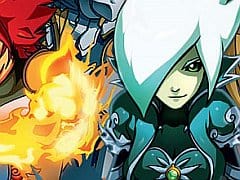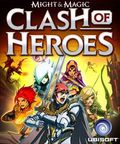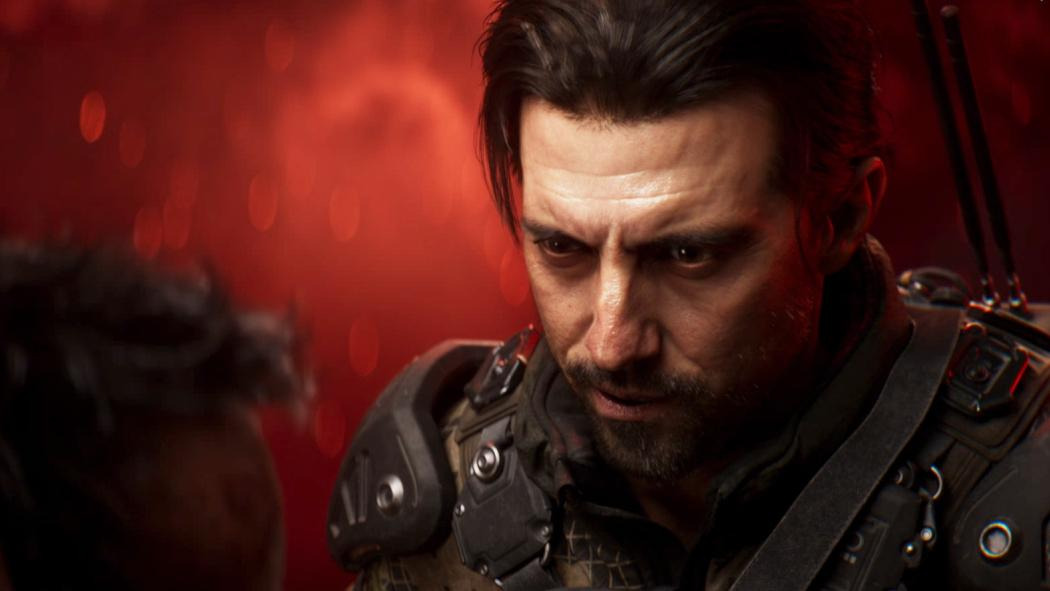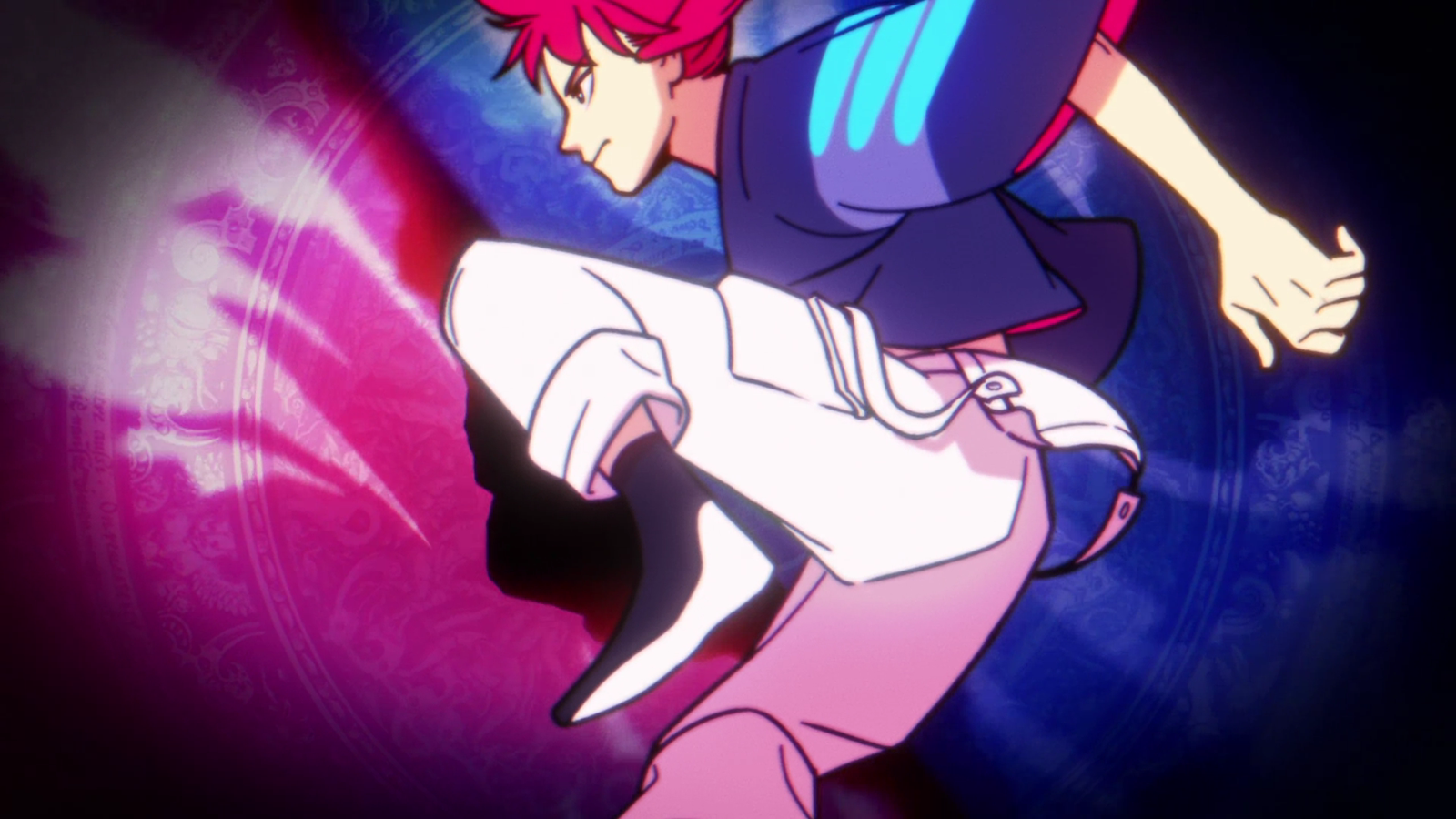You can trust VideoGamer. Our team of gaming experts spend hours testing and reviewing the latest games, to ensure you're reading the most comprehensive guide possible. Rest assured, all imagery and advice is unique and original. Check out how we test and review games here
Might & Magic: Clash of Heroes, from little-known Canadian developer Capybara Games (Critter Crunch), isn’t like Might & Magic at all. This is a good thing. It’s more like PuzzleQuest, with a pinch of 16-bit JRPG thrown into the melting pot for good measure. It’s also ruddy brilliant, and the best game to come out on Nintendo’s DS so far this year.
It seems simple enough at first. Place three-of-a-kind units vertically or horizontally, then wait for them to charge up the screen and slap bang into the enemy. But it’s not simple. It’s anti-simple. And that’s why it’s great.
Your fantasy forces line up on the bottom screen, with your opponent’s on the top screen. Each turn, the player has three movement points to spend. The idea is to reduce your enemy’s hit points to zero by vertically combining three-of-a-kind units, which, once their attack countdown has expired, trot off to the top of the screen and clash. On the defensive side, horizontally combining three-of-kind units creates a wall that absorbs enemy attacks.
There are five races, each with distinct strengths and weaknesses and unique units. The elves, for example, have a talent for defending – their walls regenerate over the course of each turn. The humans, on the other hand, are stout all-rounders, with good offensive and defensive options. There are three types of units. Core units are fodder, the pawns of Clash of Heroes’ chess board. Elite units are doubly useful – they often deal as much damage as they absorb, and some inflict status changes. But it’s the champion units that get the strategy juices flowing. These four-tile monstrosities require four core units of the same colour be placed behind them, just to get them activated. Then, there’s usually a multi-turn wait before they do their thing – a wait that can feel like a lifetime. But when the clash comes, the sparks fly.
Clash of Heroes’ genius is in its strategy, and how it skilfully unravels its complexities without bogging you down with boredom. For a game so knee-deep in nuance, it would have been easy to overwhelm the player with tutorial after tutorial after tutorial. Clash of Heroes’ campaign, however, dodges that arrow by cleverly weaving all of its units, their strengths and weaknesses and what you can do with them, and the game’s multi-faceted strategy, into a Saturday morning cartoon storyline that’s entertaining enough to keep you going through the hugely enjoyable 30-odd hour experience.
Advanced strategy centres on creating combos. Don’t worry; there are no Street Fighter-style Hadoukens or Dragon Punches in this game. In Clash of Heroes, combos occur when you create a wall and a charged formation in a single move. Even better, a “chain” occurs when you delete a unit that’s blocking the formation of a wall or charged formation. Do this, and you won’t lose a movement point.
Then there are “links”, where two or more units of the same colour attack on the same turn, and “fusions”, where charged formations are absorbed into each other when placed in a line. Grasping and mastering all of these advanced techniques is key to beating the game’s harder challenges, and makes Clash of Heroes one hell of a deep puzzle game.
Don’t let its apparent complexity put you off, though. Brilliantly, the battle heavy gameplay is broken up by JRPG-style mechanics which are sure to appeal to anyone who played the Final Fantasy series before it made the jump to 3D. The overworld of sorts allows you to explore Ashan (the world of Might & Magic) via predetermined paths divided up into nodes. This structure affords Capybara the opportunity to add spice to Clash of Heroes’ delicious broth, spice designed to offer the player a break from the relentless clash of steel and magic. The campaign’s breezy pace, which sees you take control of five young anime heroes across five areas of the world one after the other, is often punctuated by quick fire (and tricky) one-off puzzles, stealth mini-games, side quests, treasure chest hunting, and NPC chatter. There’s even levelling up, and powerful artefacts to equip. This gameplay variety combines with a rousing soundtrack to form an anime fantasy world that’s hard not to fall in love with, even if it is RPG-lite.
And, when you’re done with the campaign (no mean feat), there’s single cart and multi-cart wireless multiplayer to get your hands dirty with. Theoretically, this feature adds hours and hours of gameplay. But, if we’re being honest, it’s not the mode most will concentrate on: without online play the chances of proving the power of your brain cells against real life opponents are slim. The campaign, and its many devilish challenges, are where it’s at.
To say Clash of Heroes’ is addictive would be the understatement of the year. It crawls about under your skin like crabs, demanding you satisfy the itch during every waking moment. The combat system is almost flawless. Bar the odd insane (and unfair) difficulty spike, even the dreaded grind is pleasurable. The game makes a mockery of your timekeeping, forcing you to almost miss bus stops and tearing your punctuality to shreds. It attains that holy grail of game design: easy to learn, but hard to master. You sit down to play it, then, in what seems like a blink of an eye, you realise you should have gone to bed hours ago.
Clash of Heroes is a spin-off of the Might & Magic series, but it’s such a refreshing departure from that tortuous franchise that we can’t see it being a one-off. It’s a stunning effort from a developer that’s surely destined for great things. We wait with baited breath for the recently announced PSN and Xbox LIVE Arcade versions.
Might & Magic Clash of Heroes
- Platform(s): iOS, Nintendo DS, PC, PlayStation 3, Xbox 360
- Genre(s): Strategy, Turn Based

/https://oimg.videogamer.com/images/93d9/might_magic_clash_of_heroes_3.jpg)






